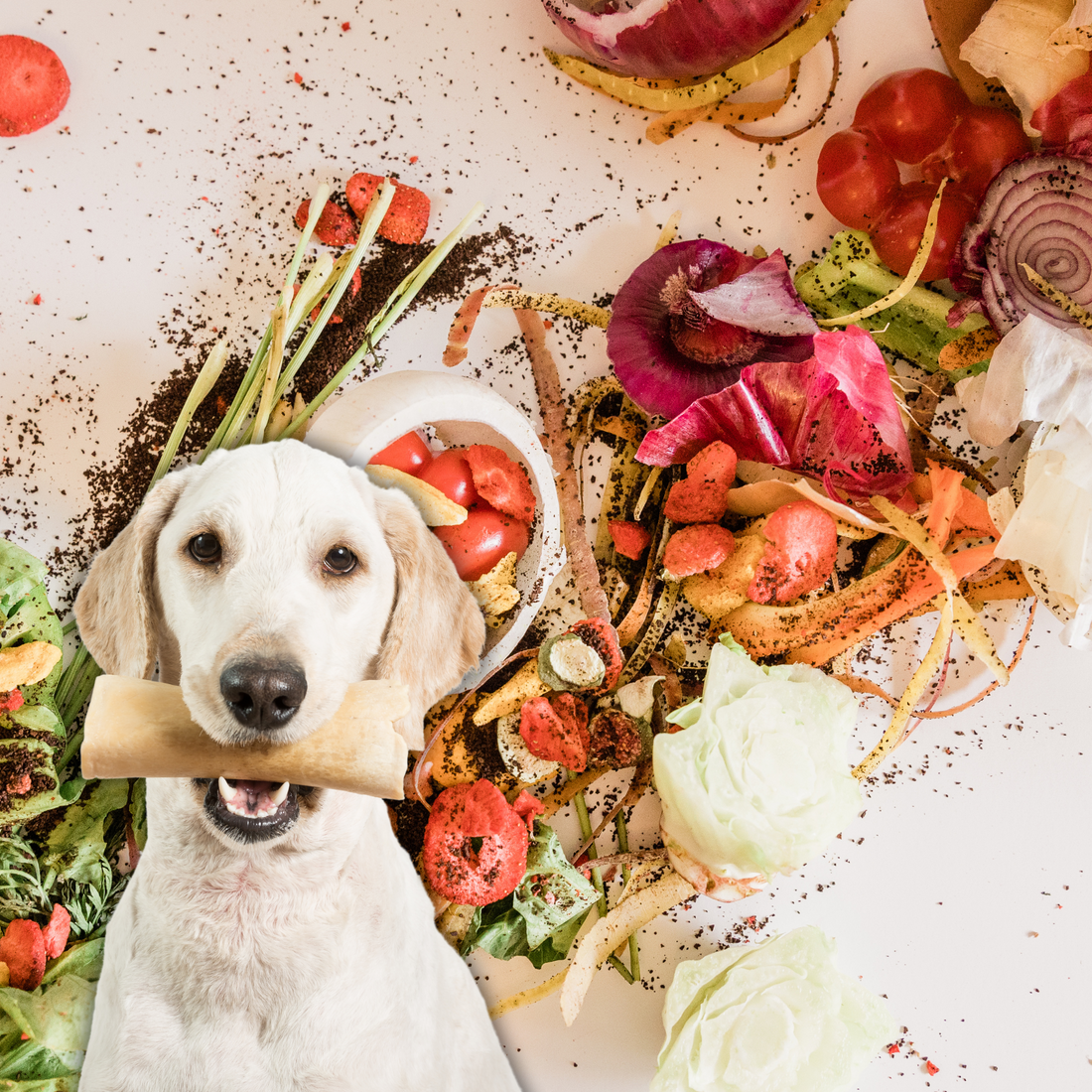
Low waste living with your pet
Share
Reduce Waste with Your Pet
Packaging waste, mechanical Co2 emissions and overconsumption of textiles and plastics are definitely dangerous for the planet, but one thing many of us may not think of is food waste. Because we know food, including fruit and veg, are grown from the Earth, the idea of food being sent to landfill aka a hole in the ground seems kind of intuitive. After all, isn't composting at home just a small scale version of food in the landfill? Unfortunately, that is not the case. Food which is not eaten or used is taken to landfill, where it will sit in layers above the soil and rot. Food being disposed of in this way, that includes fruit, veg, grains, and meat lead to more emissions to the atmosphere which contribute to air pollution and soil infertility. When food products like meat are dumped in landfills, they mix with the oils, plastics and other foods that have not been properly disposed of, and can breed disease and methane emission. All in all, throwing away food is nothing like composting at home.
We here at Bella and Boots are concerned about the impacts of food waste. Our beloved furbabies live on this planet and it's our responsibility to protect it for them. One way we can all do that is reducing food waste and specifically agricultural waste. One of the best ways to reduce meat waste is adopting nose-to-tail eating. When an animal such as a cow is slaughtered for consumption, there are more than the familiar cuts of meat like steaks, briskets and other processed bits like mince and sausages. They're yum for sure, but they only use, on average, 60% of the whole animal. That means there are large chunks of animals going to waste for every family steak night. That’s where nose-to-tail, and Bella and Boots, come in.
The parts of the animal that are most often left behind — bones, organs and tendons — have a place in the kitchen, too. Not only are they usable in the human kitchen but are a great addition to any healthy animal’s diet.

The bones of animals such as chickens and cows are excellent for dental and jaw health, as well as skin and coat maintenance. The organ meats are a vital source of important vitamins and minerals like vitamin D, A and iron. Collagen, elastin and keratin are vital for healthy skin, joints and muscles that your pets use to run, play and cuddle at night. Pets can even eat the totally undesirable parts of animals, like the tails and ears of pigs, cows and lambs. All of the parts of the animals that we don’t see in our favourite human recipes have a place in the health and wellness of your pet. Your pets can help you live a low-waste life — and thrive!
You can feed your pets these scraps from any meat you buy in store, but if you want to give your pet the best mix of fibre, nutrients, taste and convenience every night of the week, you have Bella and Boots. As explored on our website, each Bella and Boots food pack was specifically formulated to meet health goals for your pet, with carefully thought out ingredients to make sure our food is best for your pet. This includes nose-to-tail cuts like hearts and livers, muscle meats and ground up bones. Bella and Boots packs come with different meats, like beef, chicken, fish and kangaroo to give your pet the best of what our Earth has to offer. Using all parts of the animal at our disposal is the most ethical way to feed ourselves and our furry loved ones. It looks after our Earth and honours the animal we are eating.
If you're looking to live low-waste, consider how your pet can help you!
